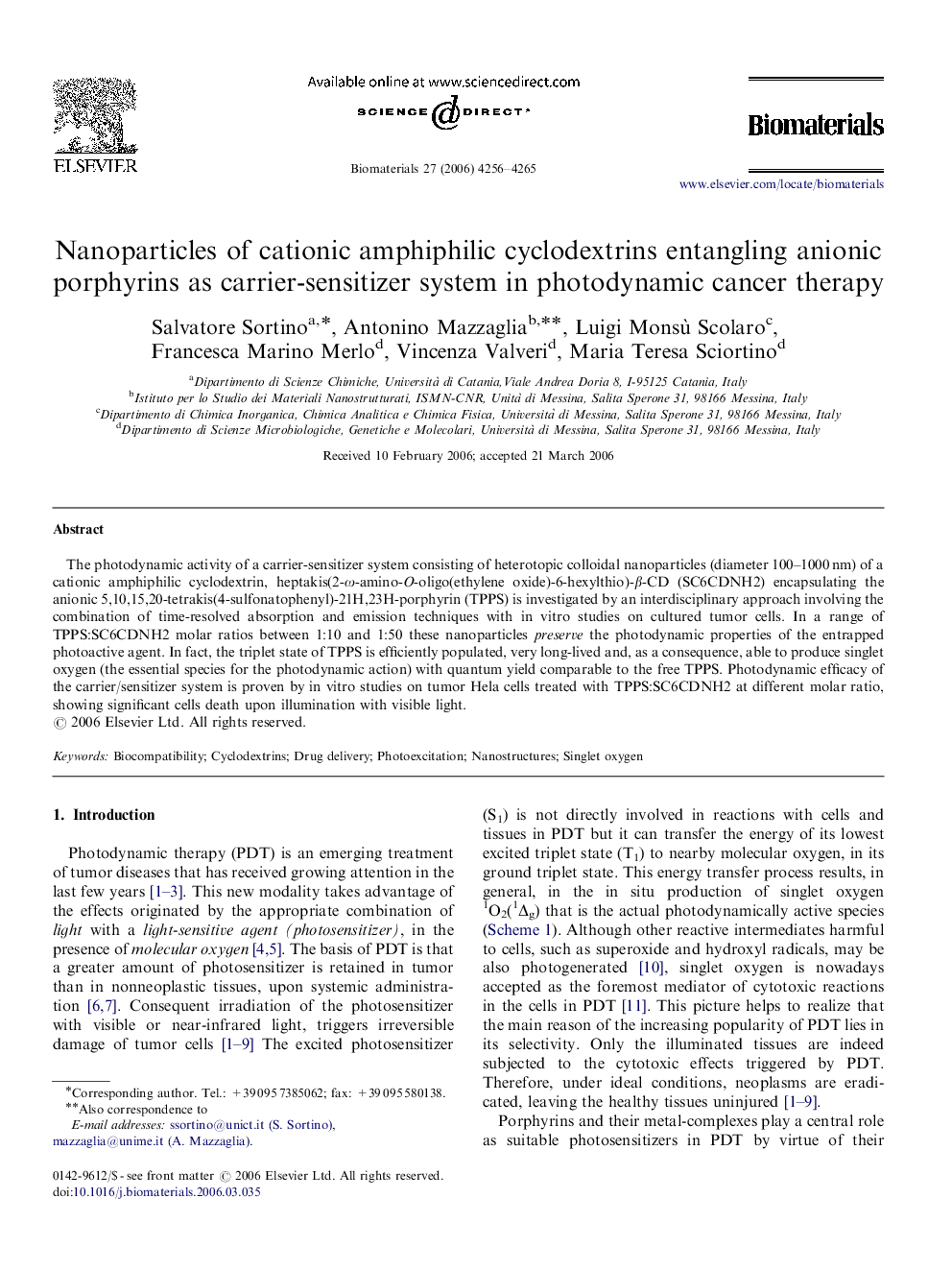| Article ID | Journal | Published Year | Pages | File Type |
|---|---|---|---|---|
| 10230145 | Biomaterials | 2006 | 10 Pages |
Abstract
The photodynamic activity of a carrier-sensitizer system consisting of heterotopic colloidal nanoparticles (diameter 100-1000 nm) of a cationic amphiphilic cyclodextrin, heptakis(2-Ï-amino-O-oligo(ethylene oxide)-6-hexylthio)-β-CD (SC6CDNH2) encapsulating the anionic 5,10,15,20-tetrakis(4-sulfonatophenyl)-21H,23H-porphyrin (TPPS) is investigated by an interdisciplinary approach involving the combination of time-resolved absorption and emission techniques with in vitro studies on cultured tumor cells. In a range of TPPS:SC6CDNH2 molar ratios between 1:10 and 1:50 these nanoparticles preserve the photodynamic properties of the entrapped photoactive agent. In fact, the triplet state of TPPS is efficiently populated, very long-lived and, as a consequence, able to produce singlet oxygen (the essential species for the photodynamic action) with quantum yield comparable to the free TPPS. Photodynamic efficacy of the carrier/sensitizer system is proven by in vitro studies on tumor Hela cells treated with TPPS:SC6CDNH2 at different molar ratio, showing significant cells death upon illumination with visible light.
Related Topics
Physical Sciences and Engineering
Chemical Engineering
Bioengineering
Authors
Salvatore Sortino, Antonino Mazzaglia, Luigi Monsù Scolaro, Francesca Marino Merlo, Vincenza Valveri, Maria Teresa Sciortino,
